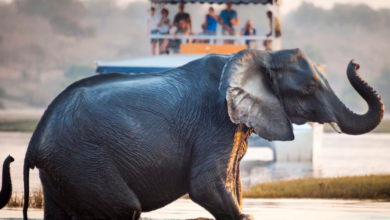Facts About the Sea Pig: Uncovering the Mystery of the Ocean’s Oddball

Have you ever heard of a sea pigs? No, it’s not a porcine animal frolicking in the waves; it’s something much more mysterious and intriguing. Residing in the depths of the ocean, sea pigs have captured the imagination of marine biologists and ocean enthusiasts alike. In this article, we’ll dive deep into the world of true facts sea pigs, exploring their unique characteristics, habitat, diet, and much more. So, buckle up for an underwater adventure that unveils the secrets of these fascinating creatures.
What is a Sea Pig?
Sea pigs, scientifically known as Scotoplanes, belong to the family of sea cucumbers (Holothuroidea), a group of echinoderms that includes starfish and sea urchins. They are not pigs at all but get their name from their plump, pinkish appearance that somewhat resembles a pig.
Physical Characteristics
Measuring up to 6 inches in length, sea pigs are known for their soft, gelatinous bodies and multiple pairs of tube feet that function both as legs and sensory antennae. These unique adaptations allow them to traverse the soft ocean floor with ease.
The Habitat of the Sea Pig
Geographic Distribution
Sea pigs inhabit the abyssal plains of the world’s oceans, typically found at depths ranging from 3,000 to 5,000 meters. They are most commonly observed in the Atlantic, Pacific, and Indian Oceans.
Environmental Preferences
These creatures prefer cold, deep-sea environments with soft, muddy bottoms where they can easily burrow and find food. The high pressure and low temperature of their habitat are conditions that few other organisms can endure.
The Diet of a Sea Pig
What do sea pigs eat
Sea pigs are detritivores, feeding primarily on the dead plant and animal material that falls from the ocean’s surface, also known as marine snow.
How They Feed
They use their tentacle-like mouthparts to sift through the sediment, absorbing nutrients from the decomposing organic matter. This feeding behavior plays a crucial role in the deep-sea nutrient cycle.
The Role of Sea Pigs in the Ecosystem
As Scavengers
By consuming dead material on the ocean floor, sea pigs help recycle nutrients back into the ecosystem, supporting the deep-sea food web.
Impact on Deep-Sea Environments
Their feeding and burrowing activities contribute to the aeration and mixing of the seabed, which can affect the distribution of other benthic organisms.
Reproduction and Lifecycle
Mating Behavior
Little is known about the mating behaviors of sea pigs, but it is believed that they reproduce by releasing eggs and sperm into the water, where fertilization occurs externally.
Lifecycle Stages
The larvae of sea pigs undergo a series of developmental stages before settling on the ocean floor and transforming into their adult form. This process contributes to their distribution across vast oceanic distances.
Fascinating Facts and Mysteries
Unique Behaviors
One of the most intriguing aspects of sea pigs is their ability to inflate and deflate their bodies, allowing them to float over the seabed when necessary.
Scientific Research and Discoveries
Despite their widespread presence, much about sea pigs remains a mystery. Ongoing research aims to uncover more about their ecology, behavior, and role in deep-sea ecosystems.
Conservation Status
Threats
While not currently considered endangered, sea pigs face threats from deep-sea fishing, mining, and pollution, which can destroy their habitats and food sources.
Conservation Efforts
Efforts to protect deep-sea environments, including marine protected areas and regulations on deep-sea mining, are crucial for the conservation of sea pigs and other deep-sea organisms.
Conclusion
The sea pig, an oddball of the ocean, plays a vital role in the deep-sea ecosystem. Despite their alien appearance and mysterious lifestyle, these creatures are an essential part of the ocean’s biodiversity. As research continues, we hope to learn more about these fascinating beings and the ways we can protect their enigmatic world.
FAQs
Why are they called sea pigs?
They are called sea pigs due to their plump, pinkish appearance and leg-like tube feet, resembling a pig.
Can sea pigs be found in shallow waters?
No, sea pigs are deep-sea creatures, living at depths usually between 3,000 to 5,000 meters.
What do sea pigs eat?
Sea pigs feed on marine snow, which is a mix of dead plant and animal material that sinks from the ocean’s surface.
How do sea pigs contribute to the ocean ecosystem?
They play a crucial role as scavengers, recycling nutrients by consuming decomposing organic matter on the ocean floor.
Are sea pigs endangered?
Sea pigs are not currently considered endangered, but they face threats from activities that damage their deep-sea habitat.




